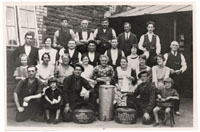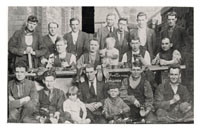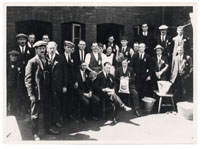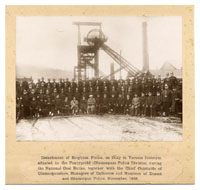 |
| You are here: Cwm > Themes > Events > : General Strike | |
 | |
|
General Strike |
|
|
|
|
|
Between 1921 and 1936, 241 mines closed in South Wales, and the number of miners in employment fell from 270 000 to 130 000. There were several contributory factors; new fuels, such as oil, were cheaper, Welsh coal was expensive to raise, and there was a loss of markets. The problem was not confined to Wales however; it was a problem throughout Britain. In 1925, the owners responded to these problems by asking the miners to accept cuts in their wages and work an extra hour per day. The miners refused and so the Government intervened by paying the owners a subsidy to balance their losses. A Royal Commission was set up and in 1926, it concluded that the industry was in need of re-organization and that some miners should accept wage cuts. The owners insisted on large cuts, whilst the Miners Federation of Great Britain fought these proposals on the slogan ‘Not an hour on the day. Not a penny off the pay’. On the 30th April 1926, the miners who refused the cuts were locked out and Britain’s coalfields came to a stop. The TUC called all trade unionists to strike, and between 3rd and 12th May, Britain was paralysed as most of the British workforce came out on strike to support the miners. On the 12th May, after only nine days, the other unions returned to work as the TUC had managed to agree terms with the Government. The miners carried on their strike until the end of the year when starvation sent them back to work.
FURTHER READING: Arnot, R.Page. The Miners: Years of Struggle (London, 1953). Morgan, Jane. Conflict and Order: the police and labour disputes in England and Wales, 1900-1939 (Oxford, 1987). Morris, Margaret. The General Strike (Penguin, 1976). Noel, Gerard. The Great Lock-out of 1926 (London, 1976). Skelley, J. (ed). The General Strike (Lawrence and Wishart, 1976). Turner, Andrew. The General Strike: 20 drawings. (London, 1977). All items listed in the further reading are available for consultation in either the South Wales Miners’ Library or the Library and Information Centre, University of Wales Swansea. Click here to link to the library catalogue.
|
|
Swansea University Special Collections
| ©University of Wales Swansea 2002 |








